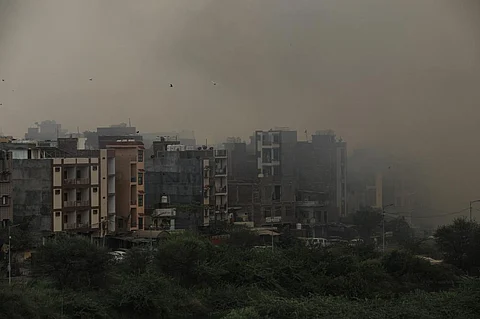

An unprecedented level of ozone pollution has marked summer 2022 in Delhi and several other Indian metropolitan cities, found an analysis by Centre for Science and Environment in the run-up to the World Environment Day.
Clean air action needs multi-pollutant approach to drastically cut emissions of precursor gases from vehicles and industrial stacks to control the emerging threat of ozone pollution, the Delhi-based non-profit said.
The geographical spread and frequency of ozone ‘exceedance’ was recorded much higher in the National Capital Region. On an average, 16 stations in the region exceeded the standard daily during March-April.
That’s a 33 per cent rise over the previous year. Neighborhoods in New Delhi and south Delhi were the worst off.
CSE studied publicly available granular real-time data from Central Control Room for Air Quality Management, a portal by the Central Pollution Control Board. It found hourly peak levels to be 23 per cent above lockdown levels.
Ozone, a highly reactive gas, affect people with respiratory ailments and asthma. It is created from reaction of other gases under the influence of sunlight.
Exceedences refer to instances of a substance, in this case ozone, crossing a threshold.
The CSE analysis found that: “Among the six big metros, Mumbai is second in order followed by Kolkata, Hyderabad, Chennai and Bengaluru – the last two have longer durations of exceedance despite lower frequency compared to the other metros.”
While Delhi-NCR recorded ozone exceedance nearly every days this summer, Mumbai recorded so 75 days and Kolkata-Howrah and Hyderabad 43 days each. For the West Bengal capital, citywide concentration was 30 per cent higher than Mumbai.
In the case of Delhi, some of the highlights from the analysis are:
Anumita Roychowdhury, executive director-research and advocacy, CSE said:
“Even before we could control the problem of particulate pollution, the toxic threat of ground-level ozone is catching up with us. Despite the warning signs, this problem has not attracted adequate policy or public attention for mitigation and prevention. Inadequate monitoring, limited data and inappropriate methods of trend analysis have weakened the understanding of this growing toxic risk.”
Due to the toxic nature of ground-level ozone, the national ambient air quality standard for ozone has been set for only short-term exposures. Compliance is measured by the number of days that exceed the standards — set off against a requirement to meet the standard 98 per cent per cent of the time of the year. It may exceed the limits on two per cent of the days in a year, but not on two consecutive days of monitoring.
“Global experience shows that there is usually a trade-off. As particulate pollution is reduced, the problem of nitrogen oxide (NOx) and ozone increases. Globally, regulators are tightening the regulatory benchmark for ozone to address the toxic threat, which is difficult to address. India should avoid falling into this trap,” said Vivek Chattopadhayay, principal programme manager, clean air programme, CSE.
Ozone mitigation demands stringent control of gases from all combustion sources including vehicles, industry, power plants and open burning in the entire region.